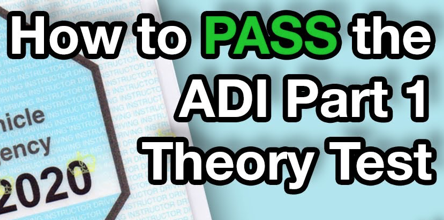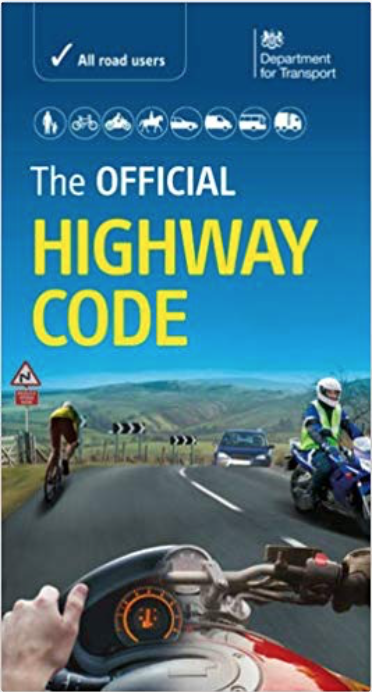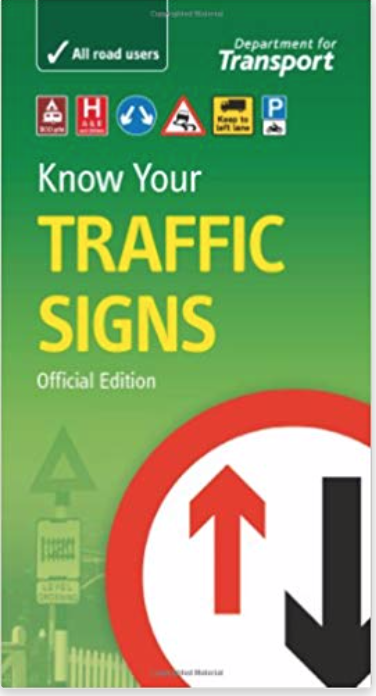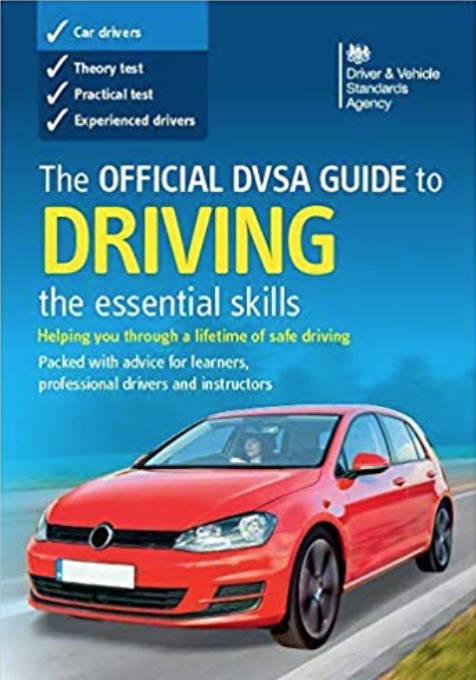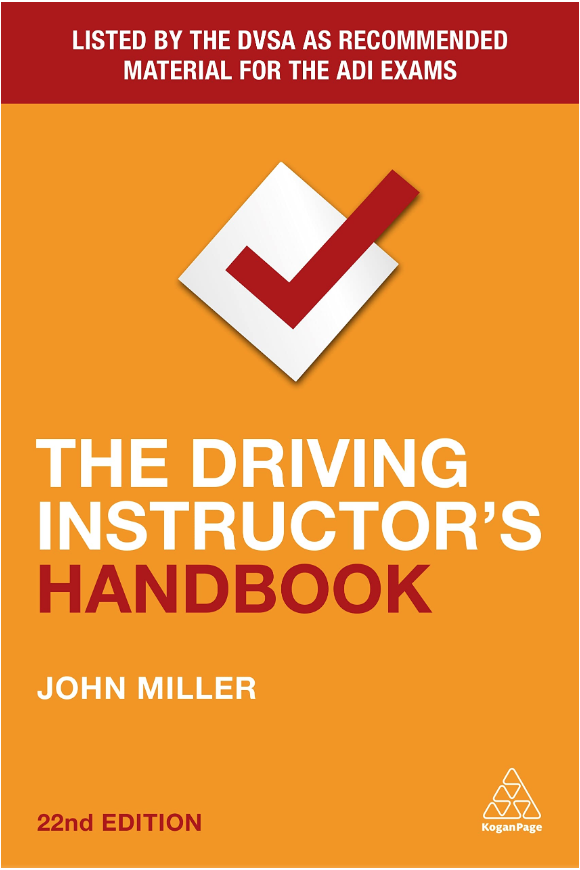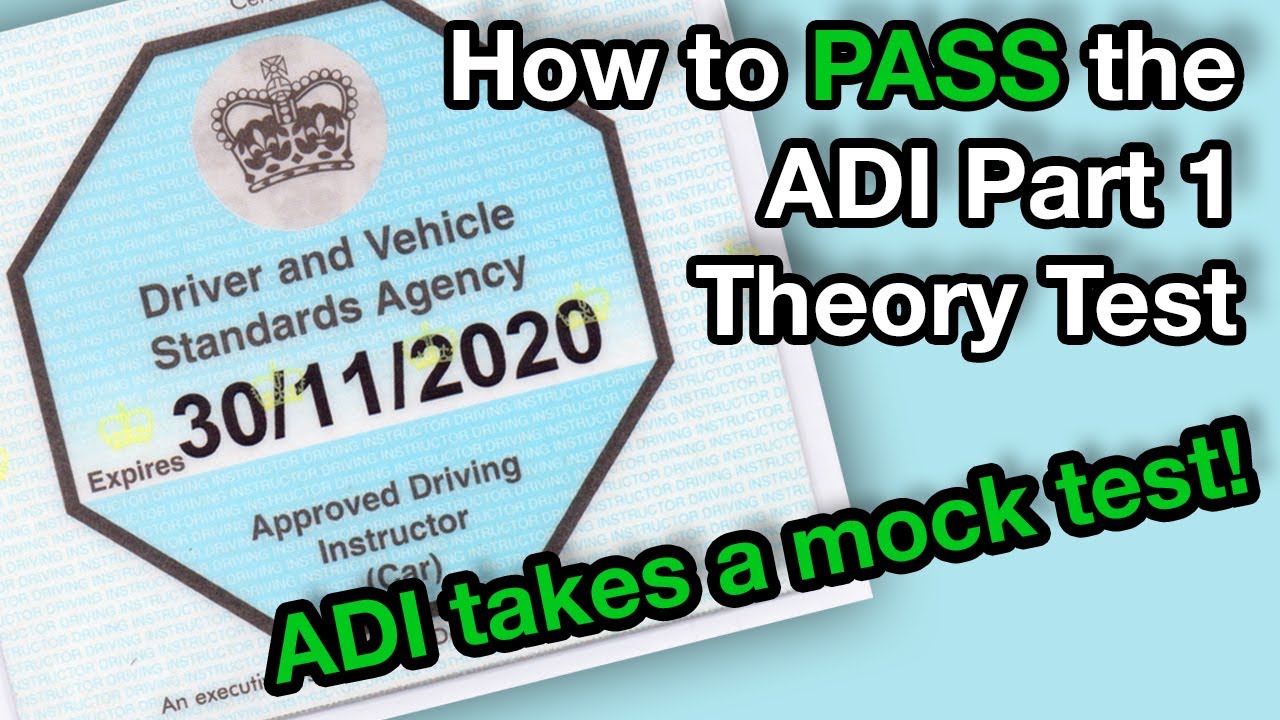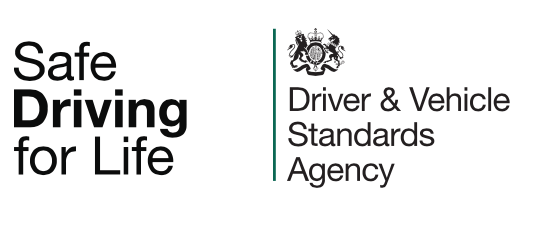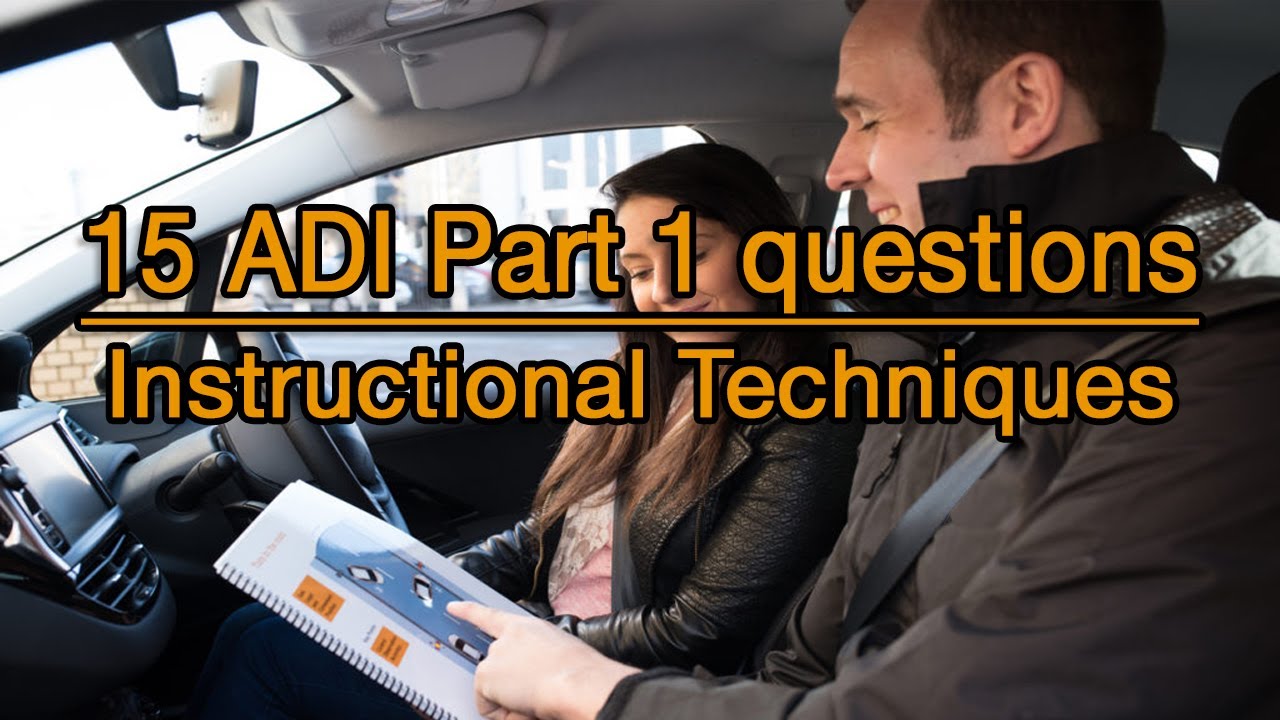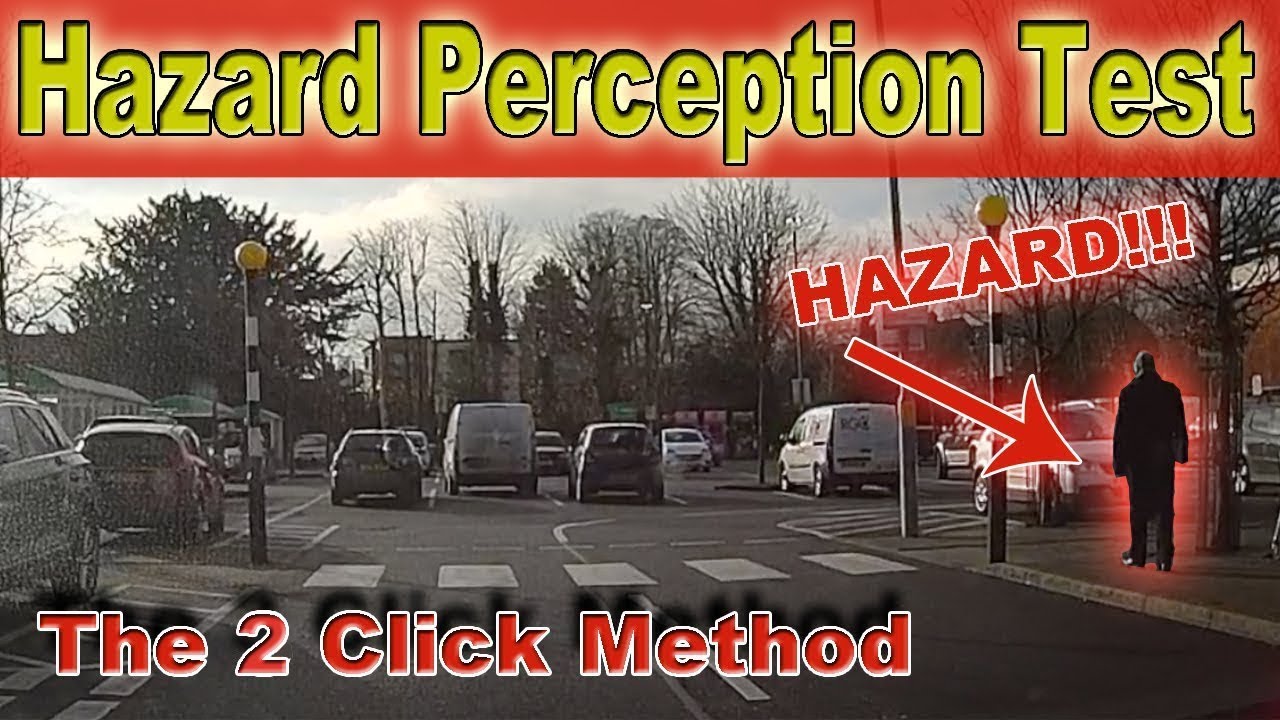Once you have completed your DBS check and then got your PRN from the DVSA the next step is to take and pass the driving instructors theory test, more commonly known as the ADI Part 1.
In this blogpost I will advise you how the ADI Part 1 works and how to prepare for it to give you the best chance of passing it on the first attempt!
How does the ADI Part 1 work?
Much like the learners theory test there are two parts to the ADI Part 1, the first part consists of 100 multiple choice questions and the second part is the hazard perception test.
Multiple Choice Questions
There are 25 questions in each of these 4 categories (sometimes known as 'bands'):
- road procedure (band 1)
- traffic signs and signals, car control, pedestrians and mechanical knowledge (band 2)
- driving test, disabilities, and the law (band 3)
- publications and instructional techniques (band 4)
A question and four possible answers will appear on the screen.
Leaving a question
You can ‘flag’ questions that you want to come back to later.
Changing your answers
You can go back to any question to review and change your answer at any point.
You Have 1 hour and 30 minutes to answer all 100 questions.
The Pass Mark
In order to pass your will need to get a minimum of 20 questions correct in each of the four categories, and overall get at least 85 questions correct out of 100. So for example:
Band 1 - 21 / 25 Band 2 - 22 / 25 Band 3 - 20 /25 Band 4 - 20 / 25
The above scores would be a FAIL, as despite getting the minimum of 20 in each band overall only 83 questions were answered correctly.
Band 1 - 25 / 25 Band 2 - 22 / 25 Band 3 - 19 /25 Band 4 - 24 / 25
The above scores would be a FAIL, the overall score may be 90, but only 19 questions were answered correctly in band 3.
Band 1 - 23 / 25 Band 2 - 24 / 25 Band 3 - 23 /25 Band 4 - 24 / 25
The above scores would be a PASS, this is because there are at least 20 correct answers per band AND the overall score is over 85.
How should I prepare for the multichoice questions?
Firstly, make sure you have the right books to revise from, the ADI Part 1 is based on the following books:
As the test uses the information in these books, technically if you bought all of the above book and knew them from cover to cover you would score 100/100 on every single ADI Part 1 test you ever took.
However, that might not be 100% true, as you also need to have the right mindset and practice the DVSA style questions in order to succeed.
Having the right mindset
According to a freedom of information (FOI) request I submitted to the DVSA the pass rate in 2018 for the multiple choice questions on the learners test was only 53.07%, whilst on the ADI Part 1 it was 75.98%.
Whilst I understand some of this is due to learners not having road experience so are more likely to get questions wrong, I also feel it is down to the different mindset. When a learner comes to do their theory test it is just seen a hurdle stopping them from getting their driving licence and going to the drive through at McDonalds! So, this may mean they don't take the theory test seriously. But if you are taking the ADI Part 1 you are doing so as part of a career change, the whole process is often seen as an investment in yourself, rather than a hurdle to overcome, and as such PDI's are likely to be more motivated and determined. Of course, the fact the ADI Part 1 costs £81 compared to only £23 for a learner theory test, is probably also a motivation to pass it first time!
When revising for your ADI Part 1 always having at the forefront of your mind that you will need to be passing all this information onto a novice driver at some point, and you will be seen as a role model! As such DON'T just do masses of mock test trying to learn all the questions and answers, instead make sure you FULLY understand the question and WHY the correct answer is the correct answer and why the incorrect answer is the incorrect answer.
You could even use 'confidence scoring' to assess your confidence with each question, after reading the question give yourself a score using the below system:
1 - Confident with selection
2 - 50:50 with selection
3 - Not confident with selection
This works best if you are honest with yourself. Once you have completed a mock test see how many questions see what your confidence scores are like. If there are several 2 and 3 then look back at the questions, look up these topics in the books or other reliable resources (Be mindful that Google can be good, but also can be misleading).
Here I am answering 25 ADI Part 1 questions:
That should have given you an idea of the level of knowledge you need to be aiming for, as like I have said before it is not just about remembering the answers, but understanding them so you can pass on the information.
Practising DVSA style questions
There are several apps and websites out there to help, some are free but are only somewhat helpful as their question bank may be out of date and therefore in some cases give incorrect information. To give you the best chance you should purchase software which uses the Official DVSA Question Bank. Here are the most popular websites to practice:
This video will also give you an idea of the sort of questions you may be asked:
Take your time!
The DVSA are a bit, well quirky, this is reflected in their timing for learner practical tests, which would never start at 10am but at 10:04am! and they don't get 1 hour to answer their multiple choice questions, but 57 minutes? This is also reflected in the DVSA multiple choice questions, sometimes they are worded strangely and need to be read several times to understand what they mean.
Remember you have up to 1 hour and 30 minutes to answer 100 questions, that is 54 seconds per question! It is extremely rare candidates run out of time. Use this time to READ THE QUESTIONS CARFULLY, for example did you notice my intentional spelling mistake there?
Sometimes the perfect answer may not be there, so you will need to pick the most likely answer.
Hazard Perception Test
The second part of the test is called the Hazard Perception Test, this is typically the one that typically causes PDI's the most grief and is notable harder than the learners version, with the ADI Part 1 Hazard Perception having a pass rate of 72.44% while the learners theory test has a 84.88% pass rate. This is how it works:
You will watch 14 video clips. The clips:
- feature everyday road scenes
- contain at least one ‘developing hazard’ - but one of the clips features 2 developing hazards
You get points for spotting the developing hazards as soon as they start to happen.
What a ‘developing hazard’ is
A developing hazard is something that would cause you to take action, like changing speed or direction.
Example A car is parked at the side of the road and is not doing anything. It would not cause you to take action, so it’s not a developing hazard.
When you get closer, the car’s right-hand indicator starts to flash and it starts to move away. You’d need to slow down, so it’s now a developing hazard.
How the scoring works
You can score up to 5 points for each developing hazard.
To get a high score, click the mouse as soon as you see the hazard starting to develop.
You do not lose points if you click and get it wrong. However, you will not score anything if you click continuously or in a pattern.
You only get one attempt at each clip. You cannot review or change your responses.
The Pass Mark
To pass the hazard perception part, you need to score at least 57 points out of 75.
That's an average of 3.53 points per clip, or in other words you need to be scoring 4 or 5 points per developing hazard in order to stand a chance of passing. On the learner theory test the Hazard Perception is identical with the same number of clips and same scoring system, the only difference is the pass mark, learners only need to get an average of 2.93 points per clip. Getting high scores on the Hazard Perception is easier said than done, and this is why the pass rate is lower for PDI's.
How should I prepare for the Hazard Perception Test?
The Driving Test Success software previously mentioned also has practice Hazard Perception tests on it, so make sure you have a copy of that.
Make sure you understand how the test works, including how the scoring system works. Many PDI's fail due to lack of understanding of the test. The most common misunderstanding is that the test is rewarding your anticipation skills, which it is not! If you clicked when you thought a car might pull out you would typically score zero, you only start scoring points when you actually need to take action, i.e. change speed or direction.
How do I get good scores on the Hazard Perception Test?
A good technique to use is to click 3 times on any developing hazards, essentially the process goes like:
- 1st click - When you anticipate the hazard, this would be when you check your mirrors in real life. This click might not score any points.
- 2nd click - When you would need to start touching the brake for the hazard. This would be the moment in real life where you are thinking "What are you doing?". This click is likely to score you the most points.
- 3rd click - When you are about to hit the hazard and need to brake firmly to prevent an accident. The "OH SH*T" moment in real life. This click will probably score very low points, but do it just in case the other two clicks scored zero.
The below videos will hopefully further clarify how the scoring system works and how to get high scores:
